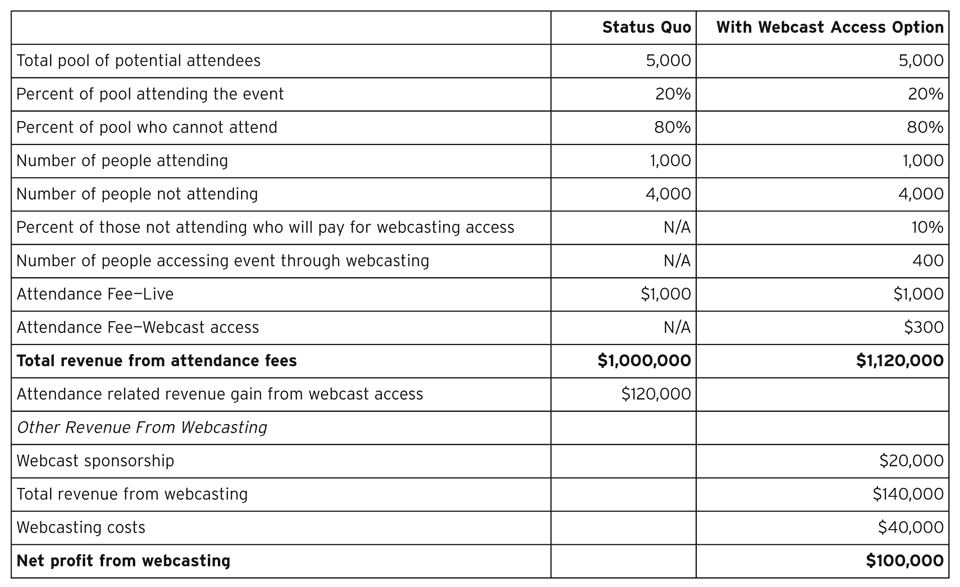Industry Perspectives: The Business Case for Event Webcasting
It’s not an easy time for event organizers. Though there are some bright spots on the horizon—attendance was up slightly from 2008 to 2009—the number of firms expecting to decrease their event marketing budgets jumped from 15% to 25% of those surveyed in 2009 by the Event Marketing Institute. When asked which type of marketing would get cut in marketing budget reduction, 54% of companies said they would cut event-related expenditures first. What can an event organizer do to staunch the loss of live attendees and continue to build loyalty for future events even as current attendance and registration income lags?
There are a number of approaches an event organizer can use to mitigate this decline in income. The organizers can downsize an event, offer a “virtual” or webcast companion event, or replace the live event completely with a virtual event. Each of these options has merit from a business perspective, although not every event is ready for complete virtualization. For many types of events, including those for which complete virtualization is not a sound strategy, webcasting can be a way to extend the value and reach of the event and add much needed supplemental income. This article will look at event webcasting as a potential strategy for increasing interest in an event and loyalty among both those who attend and thosewho cannot. After reviewing how event webcasting works, I will explore some of the pros and cons of an event webcasting program and develop a financial success model for webcasting.
Event Webcasting
Webcasting is far more than just putting video on the web. Corporate webcasting is a process of making business presentations come alive to a web audience using specialized software tools that combine video, PowerPoint, Q&A, and other interactive features. In the context of trade shows and events, those who are not able to attend can watch presentations over the web. Webcasting brings remote viewers to keynotes and breakout sessions on a live or on-demand basis.
There are different approaches to event webcasting ranging from live webcasting of keynotes to full recording and archiving of all conference presentations for later use. All approaches have merit, and the choice of how much to record and webcast will invariably differ from event to event. Deciding how much conference material to record will depend on how attendees interact with the presentations and how much their consumption of it drives attendance and revenue.
The basic process of capturing webcast content, however, is the same regardless of the webcasting strategy. The best practice for event webcasting is to record video of the presenter in sync with the presentation slide deck. Viewers of the webcast can then see an integrated picture, as depicted in Figure 1. In some cases, an event producer will webcast just the video of the presenter while the PowerPoint deck will be invisible in the background. This is a suboptimal approach, as the speaker almost always comments on the content of his or her slides.
